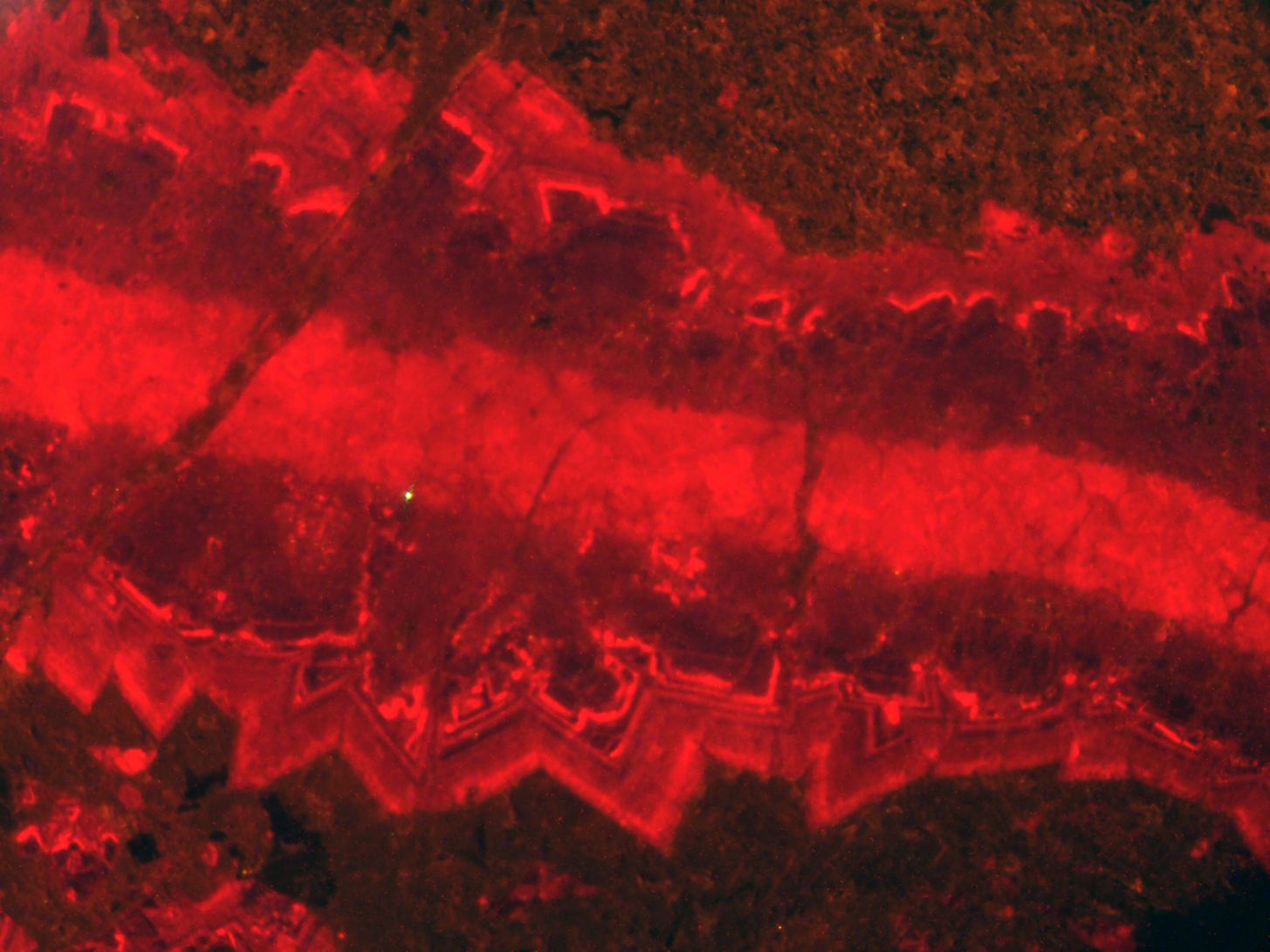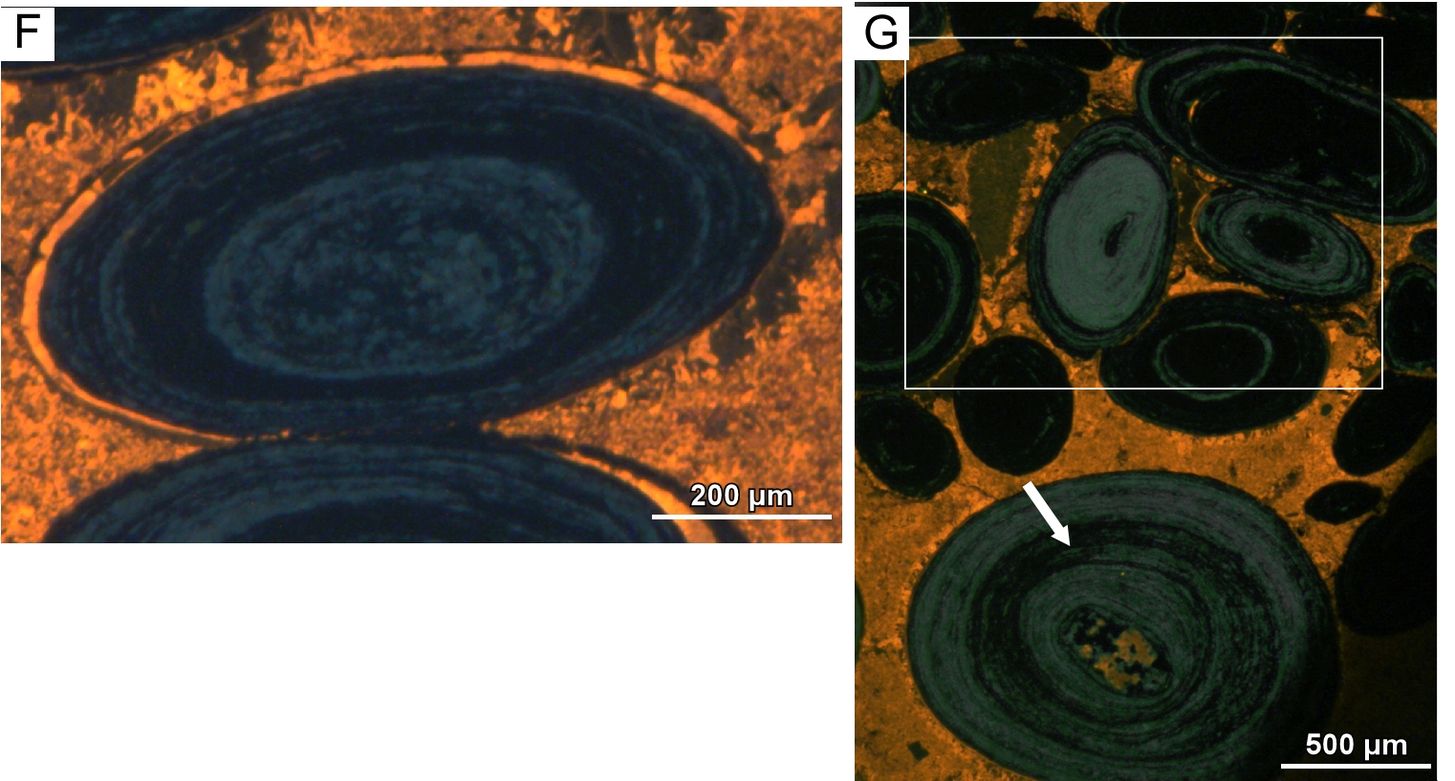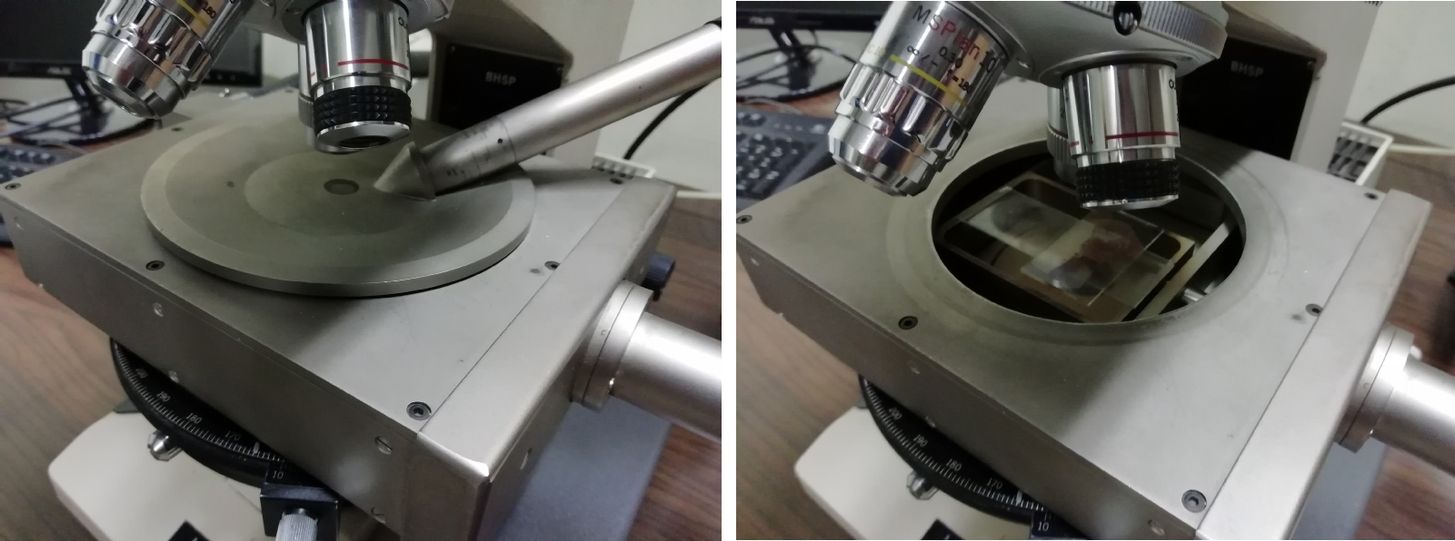Cold Cathodoluminescence Laboratory
- Home
- Instruments and Personnel
- Methods and Applications
- Project and Scientific Interests
- Pubblications

Cathodoluminescence is the phenomenon of photon emission of a solid surface excited by an electron beam. In the cold cathode equipment, the electron beam is produced by the electrical discharge between two metal electrodes instead of the incandescence of a tungsten filament as in the SEM and hot cathodoluminescence.
Cathodoluminescence in rock minerals depends on crystallographic defects and dislocations and trace element concentration. In particular, some elements activate luminescence whereas others quench it. Depending on the type of mineral and the activator/quencher quantitative ratio different colours and/or intensity of brightness may result.
Cathodoluminescence (CL) has many and diversified geological applications mainly in the field of sedimentary geology and in the study of hydrothermal systems. The main goals of CL studies are:
- diagenetic/hydrothermal sequences: changing geochemical conditions during precipitation of diagenetic/hydrothermal minerals result in zoning of cements; dissolution of cements and cement stratigraphies may be defined and correlated among beds and different areas.
CL can also enhance particular structures, both within single crystals and in the rock (dissolution surfaces, micro-brecciation), which are not easily recognizable with other methods in absence of important textural or compositional variations. - provenance studies of arenites: CL properties of common mineral components of sandstones (e.g. quartz, feldspars) allow distinction among igneous effusive, igneous intrusive or metamorphic origin.
The cold cathodoluminescence laboratory is hosted at the Torino Territorial Unit of IGG
Instruments
- CITL 8200 mk3 cathodoluminescence microscope stage, coupled with an optical polarizing microscope Olympus BH2.
- Olympus DP 74, high-sensitivity camera (20,7 Mpx), with Olympus Stream software allowing acquisition of digital images in several formats.
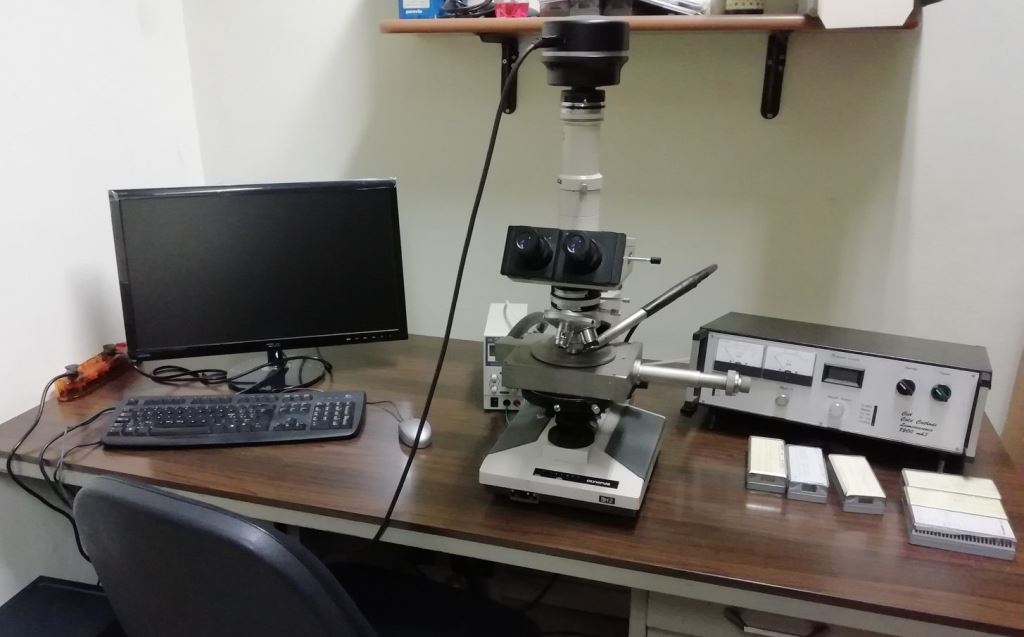
Staff
Luca Barale (IGG Researcher - Laboratory responsible)
Luca Martire (Associate Professor, Earth Sciences Dept., Torino University - Laboratory responsible)
Contatti
Luca Barale: 011 6705338, luca.barale@igg.cnr.it
Luca Martire: 011 6705194, luca.martire@unito.it
The cold cathodoluminescence equipment, active at the Torino Unit since 1992, has been utilized within several scientific projects, including:
- study of fossil hydrothermal systems in Mesozoic carbonate successions of the Alpine Tethys; - study of methane-derived authigenic carbonates in the Cenozoic successions of the Tertiary Piemonte Basin;
- characterization of stone artefacts of archaeological/cultural interest (es., lapis lazuli objects), for provenance studies of the raw materials.
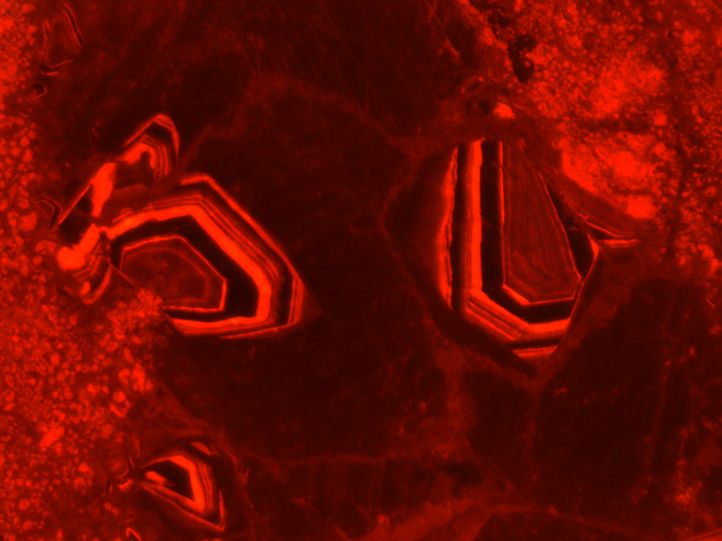
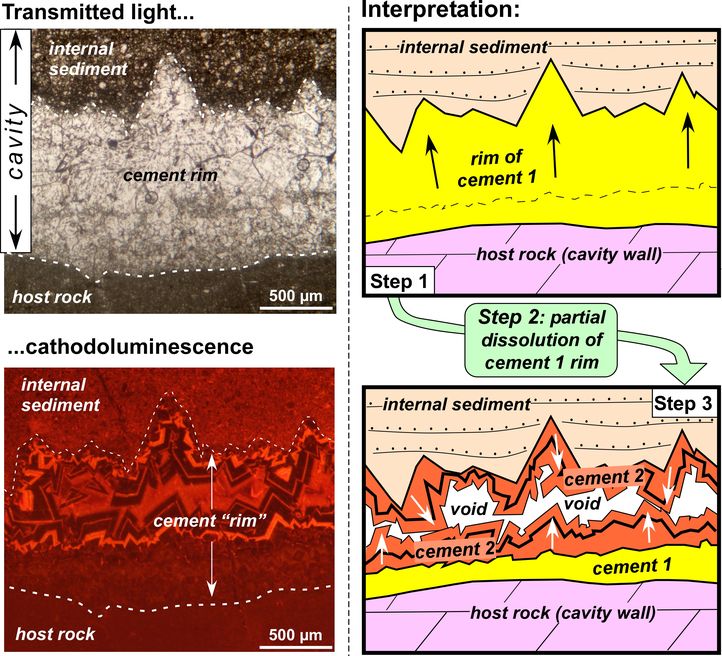
PUBBLICATIONS
- Incerpi N., Martire L., Bernasconi S., Manatschal G., Gerdes A. (2018) Silica-rich septarian concretions in biogenic silica-poor sediments: a marker of hydrothermal activity at fossil hyper-extended rifted margins (Err nappe, Switzerland). Sedimentary Geology, 378, 19-33.
- Barale L., Bertok C., d’Atri A., Martire L., Piana F. (2017) Stratigraphy, sedimentology and syndepositional tectonics of the Jurassic–Cretaceous succession at the transition between Provençal and Dauphinois domains (Maritime Alps, NW Italy). Rivista Italiana di Paleontologia e Stratigrafia, 123, 3, 355-378.
- Incerpi N., Martire L., Manatschal G., Bernasconi S. (2017) Evidence of hydrothermal fluid flow in a hyperextended rifted margin: the case study of the Err nappe (SE Switzerland). Swiss Journal of Geosciences, 110, 439-456.
- Barale L., Bertok C., Salih Talabani N., d’Atri A., Martire L., Piana F. Préat A. (2016) Very hot, very shallow hydrothermal dolomitization: an example from the Maritime Alps (NW Italy–SE France). Sedimentology, 63, 7, 2037–2065.
- Martire L., Bertok C., d’Atri A., Perotti E., Piana F. (2014) Selective dolomitization by syntaxial overgrowth around detrital dolomite nuclei: a case from the Jurassic of the Ligurian Briançonnais (Ligurian Alps). Journal of Sedimentary Research, 84, 40–50.
- Barale L., d’Atri A., Martire L. (2013) The role of microbial activity in the generation of Lower Cretaceous mixed Fe-oxide–phosphate ooids from the Provençal Domain, French Maritime Alps. Journal of Sedimentary Research, 83, 196–206.
- Perotti E., Bertok C., d’Atri A., Martire L.., Piana F., Catanzariti R. (2012) A tectonically-induced Eocene sedimentary mélange in the West Ligurian Alps, Italy. Tectonophysics, 568-569, 200-214.
- Bertok C., Martire L., Perotti E., d’Atri A. & Piana F. (2012) Kilometre-scale palaeoescarpments as evidence for Cretaceous synsedimentary tectonics in the External Briançonnais Domain (Ligurian Alps, Italy). Sedimentary Geology, 251-252, 58-75.
- Natalicchio M., Birgel d., Dela Pierre f., Martire L., Clari P., Spötl C., Peckmann J. (2012) Polyphasic carbonate precipitation in the shallow subsurface: Insights from microbially-formed authigenic carbonate beds in upper Miocene sediments of the Tertiary Piedmont Basin (NW Italy). Palaeogeography, Palaeoclimatology, Palaeoecology, 329-330, 158-172.
- Bertok C., Martire L., Perotti E., d'Atri A., Piana F. (2011) Middle-Late Jurassic syndepositional tectonics recorded in the Ligurian Brianconnais succession (Marguareis–Mongioie area, Ligurian Alps, NW Italy). Swiss Journal of Geosciences, 104, 237-255.
- Dela Pierre F., Martire L., Natalicchio M., Clari P., Petrea C. (2010) Authigenic carbonates in Upper Miocene sediments of the Tertiary Piedmont Basin (NW Italy): Vestiges of an ancient gas hydrate stability zone?
GSA Bulletin, 122 (7-8), 994-1010. - Martire L., Natalicchio M., Petrea C., Cavagna S., Clari P., & Dela Pierre F. (2010) Petrographic evidence of the past occurrence of gas hydrates in the Tertiary Piedmont Basin (NW Italy). GeoMar-Lett., 30, 461-476.
- Clari P., Dela Pierre F., Martire L., Cavagna S. (2009) The Cenozoic CH4-derived carbonates of Monferrato (NW Italy): A solid evidence of fluid circulation in the sedimentary column. Marine Geology, 265, 167-184.
- Lo Giudice A., Re A., Calusi S., Giuntini L., Massi M., Olivero P., Pratesi G., Albonico M., Conz E. (2009) Multitechnique characterization of lapis lazuli for provenance study. Analytical and Bioanalytical Chemistry, 395, 2211-2217.
- Perello P., Delle Piane L., Piana F., Stella F., Damiano A. (2004) Brittle post-metamorphic tectonics in the Gran Paradiso Massif (north-western Italian Alps). Geodinamica Acta, 17, 71-90.
- Clari P., Cavagna S., Martire L. & Hunziker J. (2004) - A Miocene mud volcano and its plumbing system: a chaotic complex revisited (Monferrato, NW Italy). Jour.Sed.Res., 74, 662-676.
